|
||||||||||||||||||||||||||||||||||||||||||||||||
|
||||||||||||||||||||||||||||||||||||||||||||||||
|
|
||||||||||||||||||||||||||||||||||||||||||||||||
|
||||||||||||||||||||||||||||||||||||||||||||||||
|
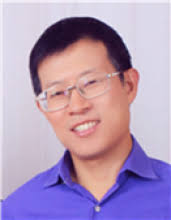
A captivating group of materials whose existence has been experimentally proven a little over a decade ago will feature on the afternoon of September 25 at the XVIII B-MRS Meeting. These are topological insulators, which in broad lines can be described as materials that are insulating in their interior but can support flows of electrons on their surface. These materials have attracted the scientific community both for the challenges they pose to basic science and for their application possibilities in quantum computing and spintronics, two areas that should generate technologies for the very high performance devices we will use in the future.
The lecturer will be Mingzhong Wu, Professor of Physics at Colorado State University (USA). Prof. Wu received his Ph.D. in Solid State Electronics from Huazhong University of Science and Technology (China) in 1999. In 2007 he joined the faculty of Colorado State University. Between 2012 and 2016 he was an Editor for IEEE Magnetics Letters. Currently he serves as an Editor for Physics Letters A, besides being on editorial boards of Journal of Applied Physics and Journal of Magnetism and Magnetic Materials. He has authored about 140 papers and 4 book chapters, and he has co-edited a book on magnetic insulators.
In his plenary lecture at the XVIII B-MRS Meeting, Professor Wu will talk about the experiments he conducted on a system consisting of a topological insulator layer interfacing with a magnetic insulator layer. Working with this system, Professor Wu could understand a little more about the nature of topological insulators, as well as explore applications related to the control of magnetic properties.
See our mini interview with this scientist.
B-MRS Newsletter: – We´d like to know more about your scientific work. Please choose your favorite contribution, briefly describe it, and share the references.
The main interests of my research group are with magnetization dynamics and spintronics. We have contributed to the development of the research field of insulator-based spintronics. We explored different approaches for using magnetic insulators to generate pure spin currents; demonstrated the use of spin currents to manipulate and control magnetization in magnetic insulator thin films; and developed unique processes for the growth and patterning of high-quality magnetic insulator thin films. Using spin waves in magnetic insulator thin films, we have observed experimentally a number of new nonlinear phenomena, such as soliton fractals and chaotic solitons. These observations contributed to the advance of “Nonlinear Dynamics” in general and the understanding of magnetization dynamics in magnetic thin films in particular. Some of our works are listed at: https://www.physics.colostate.edu/about/people/mingzhong-wu/
B-MRS Newsletter: – What does the word “topological” refer to in the case of the insulators you study?
The word “topological” refers to the topological distinction between topological insulators and ordinary insulators. Insulators can be characterized by a Z2 topological invariant. This invariant takes odd integers for topological insulators but takes even integers for ordinary insulators.
For more information on this speaker and the plenary talk he will deliver at the XVIII B-MRS Meeting, click on the speaker’s photo and the title of the lecture here https://www.sbpmat.org.br/18encontro/#lectures.
Description
While the electronic age has made the publication process easier and quicker, optimizing the structure of a scientific paper requires a certain degree of skill and proficiency. During this “ACS Publications’ Meet the Editors” event, editors from some of our journals will summarize the key steps involved in writing an effective paper, journal submission, review processes, and post-publication efforts.
Panelists

When?
September 25, 2019, from 12:00 to 14:00.
Where?
At Sibara Hotel, Persico room (3rd floor).
Registration
Free registration is limited to 180 participants. Go the general registration meeting system and choose this session in “add/edit activities”: https://www.eventweb.com.br/xviiisbpmat/home-event/
Lunch boxes will be provided.
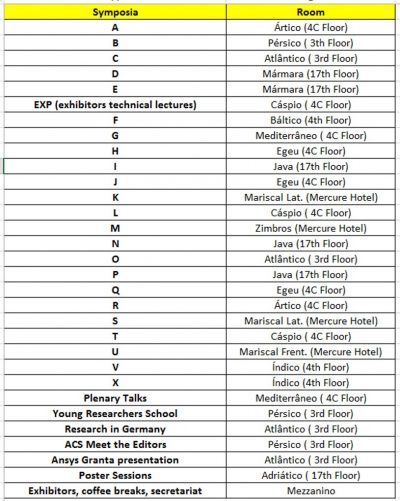 Due to the high participation in the XVIII B-MRS meeting (Balneário Camboriú, September 22 to 26), and to ensure everyone’s comfort, the sessions and activities will take place in two hotels, 300 meters apart: Hotal Sibara Flat & Conventions and Mercure Camboriu Hotel. Both venues are located in the center of the city, close to many hotels, restaurants and shops, and some meters from the sea.
Due to the high participation in the XVIII B-MRS meeting (Balneário Camboriú, September 22 to 26), and to ensure everyone’s comfort, the sessions and activities will take place in two hotels, 300 meters apart: Hotal Sibara Flat & Conventions and Mercure Camboriu Hotel. Both venues are located in the center of the city, close to many hotels, restaurants and shops, and some meters from the sea.
In addition, the opening session of the event will be held at the Cristo Luz Complex, one of the main tourist attractions in the city, with impressive panoramic views.
Finally, the event party will be held at the Lounge of the Green Valley Club, elected ‘The Most Prestigious International Club’ in 2013, 2015, 2018 and now 2019. The band of the party will be the “Brothers”, see videos: https://www.youtube.com/watch?
Opening session (opening ceremony, memorial lecture and welcome cocktail):
Where? Cristo Luz Complex. Rua Indonésia, 800, Balneário Camboriú.
When? September 22 (Sunday), starting at 7:30 pm.
How to get? The complex is a 10-minute taxi/Uber ride from the Sibara Hotel. There will be free shuttle service between Sibara Hotel and “Complexo Cristo Luz” from 5:00 pm on. It is recommended to arrive in advance.
Oral sessions of symposia K, M, S and U: at the Mercure Camboriú Hotel. Avenida Atlântica, 2010, Balneário Camboriú.
All other program sessions and activities (oral sessions of all other symposia, all poster sessions, plenary lectures, technical lectures of exhibitors, pre-event tutorial, exhibitors fair, coffee breaks, secretariat, workshops and round tables): at Hotel Sibara. Avenida Brasil, 1500, Balneário Camboriú.
Conference Party
Where? Lounge of the Green Valley Club.
When? September 25 (Wednesday), starting at 9 pm.
How much? 20 reais. Tickets (limited) will be on sale at the event secretariat from September 23 (Monday).
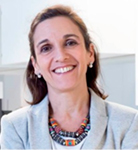
After blood, bone is the most frequently implanted/ transplanted tissue, with about 2 million bone grafts performed each year worldwide – a number that tends to increase at the rate of population aging. A well-known case is that of the jaw graft to allow firmer dental implants. However, many other causes, such as tumors, severe fractures, congenital malformations or even infections, may cause a patient to need a graft, that is to say, an implant of a natural or synthetic piece of bone to support the natural growth of bone tissue.
In Barcelona, at the Universitat Politècnica de Catalunya (UPC), a research group has been successfully working on the development of innovative tissue regeneration biomaterials. Led by Professor Maria-Pau Ginebra, the multidisciplinary group consists of 30 researchers. After many published papers and patents obtained, Professor Ginebra decided to found, along with other members of the group, a spin-off company to bring the results of years of research into real life. Thus, in 2013, Mimetis Biomaterials was created, dedicated to nature-inspired bone regeneration solutions.
On the afternoon of September 24, Prof. Maria-Pau Ginebra will deliver a plenary lecture at the XVIII B-MRS Meeting. She will talk about a new generation of bone graft biomaterials, made through nature-inspired methods that allow control of the structure and composition of the material at the nano scale. The resulting biomaterials bring together the benefits of both natural and artificial bones, including the possibility of producing personalized grafts on 3D printers.
See our mini-interview with this Spanish scientist, Full Professor and Head of the Department of Materials Science and Metallurgy at UPC, President of Mimetis Biomaterials, and Member of the Editorial Board of Acta Biomaterialia, Journal of Tissue Engineering and the International Journal of Molecular Sciences.
B-MRS Newsletter: – You work in a research area that has a direct impact on society. What, in your opinion, is your scientific discovery with the greatest actual or potential impact? Please describe it very briefly.
One of the great challenges in the field of bone regeneration is the development of synthetic materials that are able to be degraded and transformed in newly formed bone. In this case, the synchronization between material degradation and new bone deposition is critical, and very difficult to achieve. We have demonstrated that this can be accomplished by using biomimetic processing routes, which allow tuning the nanostructure and composition of hydroxyapatite, mimicking more closely the mineral phase of bone. In this way the synthetic material can enter the natural bone remodeling cycle, allowing for this progressive transformation in new bone tissue.
B-MRS Newsletter: – Turning scientific knowledge into products is not an easy task. In your experience, what are the most important factors in getting a lab research to become a product on the market?
The transformation of the scientific achievements into real products is indeed a great challenge. This is particularly difficult in the biomedical field, where the scientists face a number of regulatory restrictions which were often overlooked during the previous stages of more “academic” research. In my experience, to be successful, you need the confluence of a good idea and the right people. Moreover, you need money. In summary, in my experience there are three main aspects that determine the success of the translation of a good idea to the market: 1) selecting a good team, with people mastering the different aspects of entrepreneurship, which we, as scientist, do not know; from regulation/legislation to marketing and financial aspects; 2) finding appropriate investors is always necessary; the innovation in the biomedical field is particularly expensive; 3) being willing to work really hard.
For more information on this speaker and the plenary talk she will deliver at the XVIII B-MRS Meeting, click on the speaker’s photo and the title of the lecture here https://www.sbpmat.org.br/18encontro/#lectures.

Many shades of blue, red and purple that we can see in the vegetable kingdom (for example, in grapes, raspberries, eggplants and flowers such as violets) are known to be generated by the presence of natural pigments called anthocyanins. However, what makes anthocyanin express in a plant a certain tone of this wide range? This intriguing basic science issue has applications of great interest to the food industry in its quest for healthier dyes from natural components.
A thorough answer will be presented in a plenary lecture of the XVIII B-MRS Meeting by Stefano Baroni, Full Professor of Condensed Matter Theoretical Physics at Scuola Internazionale Superiore di Studi Avanzati (SISSA) – an institution located in Trieste (Italy), dedicated to research and graduate studies in various areas of science. Baroni has been studying that issue, using, mainly, a computational method that considers phenomena occurring at the molecular level over several time scales.
Prof. Stefano Baroni is an internationally renowned Italian scientist who loves to invent and improve computational methods to unveil the properties of matter at the molecular scale and apply them to problems of fundamental and applicative interest. For example, Baroni is one of the principal creators of Density Functional Perturbation Theory (DFPT), a computational tool that allows the study of physical properties of materials that depend on responses to external perturbations. He is also the founder and one the main instigators of the Quantum ESPRESSO, project, one of the most popular open source softwares for quantum materials modeling and calculations at the nanoscale, and founding director of the Quantum ESPRESSO Foundation.
Stefano Baroni obtained a degree in Physics from the Università di Pisa (Italy) in 1978. After that, until 1984, he was a postdoctoral fellow at the École Polytechnique Fédérale de Lausanne (EPFL), in Switzerland. Later, he became Assistant Professor at the Department of Theoretical Physics at the Università degli Studi di Trieste until he joined SISSA in 1988. From 1994 to 1998, he was Director of CECAM, a European center for research in computational sciences and their applications, then based at the École Normale Supérieure de Lyon, in France. Thereafter, until 2003, he served as coordinator in Trieste of the Istitituto Nazione per la Fisica della Materia (INFM). From 2001 to 2008, he was Founding Director of the DEMOCRITOS national simulation center, now part of the Italian CNR. Baroni has been a visiting professor at many institutions around the world, including Université Pierre et Marie Curie (France), Princeton University (USA), University of Minnesota (USA), University of Sydney (Australia), University College London (UK).
See our mini interview with Prof. Stefano Baroni.
B-MRS Newsletter: – We´d like to know more about your scientific work. Please choose one or two of your favorite/ high-impact contributions, briefly describe them, and share the references.
For forty years my research has been motivated by the attempt to solve the fundamental equations that determine the properties of materials at the atomic scale, in the most realistic conditions practically accessible to computational science. While this effort, which I shared with many scientists more talented than me around the world, is having a tremendous impact in many and diverse technologies, as this Conference convincingly witnesses, my own motivation has been, how to say?, a bit “swotty”? Theorists like me strive to understand. Geniuses sometimes understand what they cannot teach or do not care to implement. Ordinary swots have to do, implement, and teach in order to convince themselves they have understood, and this is what I have been doing all my life, like a Renaissance craftsman. I am probably mostly known for density functional perturbation theory [https://doi.org/10.1103/RevModPhys.73.515], a technique that Paolo Giannozzi and I introduced in the late 80s [https://doi.org/10.1103/PhysRevLett.58.1861] and that is now considered the state of the art in the simulation of the vibrational properties of condensed matter. In the late 00s my colleagues and I generalised this technique to account for the dynamical phenomena that are probed in optical spectroscopies [https://doi.org/10.1103/PhysRevLett.96.113001, https://doi.org/10.1063/1.2899649]. This work provided the methodological motivation for me to enter the field of molecular spectroscopy, which eventually led me to study the color of flowers and fruits. The challenge to compute what others believe cannot be computed was also the motivation for me to enter the fascinating field of heat and charge transport in condensed matter, a senile passion I will have the privilege to report on in Symposium S of this conference on September 24 at 9:30 [https://doi.org/10.1038/nphys3509, https://doi.org/10.1038/s41598-017-15843-2, https://doi.org/10.1038/s41467-019-11572-4, https://doi.org/10.1103/PhysRevLett.122.255901, https://doi.org/10.1038/s41567-019-0562-0].
B-MRS Newsletter: – The subject of the talk aroused our curiosity. Could you tell us what led you to study these pigments? Does it have to do with industrial interest? With the search for fundamental answers? With the application of a new methodology?
As mentioned before, I was drawn to molecular spectroscopy while seeking useful applications for a new computational method that my collaborators and I had devised to deal with dynamical perturbations to quantum-mechanical systems. Ask around what would be the most important application of molecules absorbing light, and many would answer: “solar cells to produce clean, inexhaustible, energy”. So we went, and we were induced into the wrong thinking that efficient and inexpensive solar cells could be manufactured “using fruit juice” (i.e. using anthocyanins as the light-absorbing element of a photovoltaic device). It soon became clear that while the principle per se is not wrong (in fact, organic solar cells based on it are routinely assembled and used for educational purposes https://www.teachengineering.org/activities/view/uoh_organic_activity1, https://education.mrsec.wisc.edu/titanium-dioxide-raspberry-solar-cell/) the stability and efficiency of the resulting device are far too poor for industrial purposes. Meanwhile, our work attracted some attention, and I was invited to some important meetings on solar energy. On one occasion, I declined the invitation knowing that our work could not have a real impact in the field. The organisers flatteringly insisted, and I finally accepted under the condition that I would not talk of solar energy, but of the color of fruits and flowers, which had meanwhile started to arouse my curiosity. A few months later I was approached by a representative of a head-hunting company who, seeking an expert in the molecular simulation of natural dyes on behalf of a major multinational food manufacturer, had stumbled across the abstract of my talk. When I received the telephone call I thought it was a prank and I almost hung up on her. I resisted the impulse, and that was the beginning of an exciting five-years adventure in industrial research, which I never thought I would have lived and whose story I will tell in Balneário Camboriú …
For more information on this speaker and the plenary talk he will deliver at the XVIII B-MRS Meeting, click on the speaker’s photo and the title of the lecture here https://www.sbpmat.org.br/18encontro/#lectures.
|
||||||||||||||||||||||||
|
||||||||||||||||||||||||
|

Uma combinação de espírito empreendedor, nascido na infância, e formação científica, desenvolvida na etapa universitária, levou Amanda Luizetto dos Santos a criar a Nanomed dois anos depois de concluir seu doutorado. “A fundação da Nanomed foi algo natural, sempre quis empreender, apenas precisei de um tempo para amadurecer o conceito como imaginava”, comenta.
Quando era uma criança, Amanda costumava montar uma banca na rua para vender seus desenhos. “Desde pequena o empreendedorismo roubou meu coração”, diz ela. O tempo passou e as brincadeiras foram se tornando um objetivo de vida. No final da graduação em Farmácia, cursada na PUC-Campinas, ela participou de uma iniciativa do Sebrae para formar jovens empreendedores, na qual abriu, manteve e encerrou (com saldo positivo, esclarece) uma empresa de velas de decoração. “Essa experiência foi muito enriquecedora e, de fato, reavivou meu interesse pelo mundo do empreendedorismo”, relembra.
Da graduação, Amanda pulou direto para o doutorado em Química Analítica, realizado no Instituto de Química de São Carlos (USP), no qual lidou com pesquisa em óleos essenciais. O doutorado incluiu um estágio científico nos Estados Unidos, na Cleveland State University. Depois, trabalhando junto à indústria de cosméticos, Amanda notou a demanda desse mercado por inovação e conseguiu conceber uma primeira versão da empresa. “Encontrei o que buscava desde pequena”, ela diz.
Localizada em São Carlos (SP), a Nanomed se dedica a desenvolver e comercializar nanossistemas sempre inovadores, pensados para resolver desafios específicos de segmentos da indústria como o cosmético e o de saúde e bem-estar. Um exemplo de tecnologia da Nanomed é o das nanocápsulas que protegem substâncias de interesse (moléculas hidratantes para a pele, aromatizantes usados em remédios, repelentes de insetos), as transportam em doses mínimas e as entregam no local desejado. As nanocápsulas e demais nanopartículas da Nanomed, reforça Amanda, passam por avaliações científicas para conferir se apresentam toxicidade com relação a tecidos vivos e ao meio ambiente.
Além de desenvolver nanossistemas para outras empresas, a startup está construindo seu portfólio de produtos. Os primeiros produtos próprios, duas linhas de cosméticos baseados em nanotecnologia, entrarão no mercado (via e-commerce) em breve. E, entre final deste ano e início do próximo, será a vez do lançamento de produtos dos segmentos de alimentos e saneantes.
A Nanomed foi formalmente criada em 2012 após a aprovação de um projeto no programa PIPE da Fundação de Amparo à Pesquisa do Estado de São Paulo (Fapesp). O PIPE apoia a pesquisa científica e tecnológica em pequenas empresas do estado de São Paulo. Pouco depois da criação, a Nanomed incubou-se no Parque Tecnológico de São Carlos (ParqTec), onde permaneceu até sua graduação, em 2017.
Desde o início, a startup tem se dedicado à pesquisa e desenvolvimento (P&D) de suas tecnologias e produtos e, simultaneamente, tem aproveitado a sua capacidade de realizar análises e ensaios para prestar serviços, principalmente a empresas dos ramos cosmético e farmacêutico. Graças à prestação de serviços, a Nanomed hoje é autossustentável, conta Amanda, que atua como CEO da empresa. “Contudo, o lucro ainda vem sendo reinvestido”, diz ela.
Para suas atividades de P&D e prestação de serviços, a Nanomed conta com equipamentos na sede da empresa, alguns deles adquiridos em projetos apoiados pela Fapesp e pelas agências federais Finep e CNPq. Além disso, a startup contrata ensaios específicos em laboratórios de universidades e outros parceiros.
Atualmente, atuam na Nanomed quinze pessoas – sócios, colaboradores, bolsistas e consultores. A maior parte da equipe é composta por mestres e doutores, formados em Farmácia, Química, Engenharia e Física, que trabalham no desenvolvimento de produtos e na prestação de serviços. A startup também conta com profissionais que atuam nas áreas jurídica e administrativa.
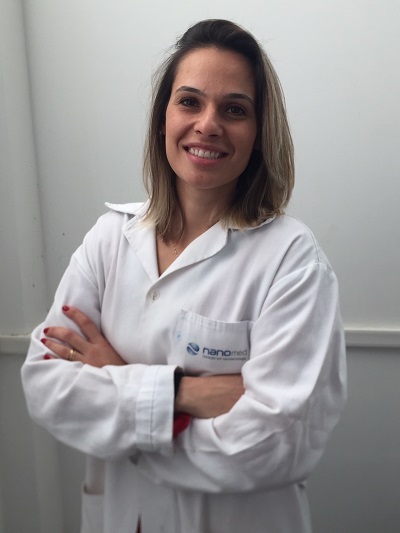
Veja nossa entrevista com Amanda Luizetto dos Santos, sócia-fundadora e CEO da Nanomed.
Boletim da SBPMat: – Quais foram os fatores mais importantes no sentido de viabilizar a criação e desenvolvimento da startup?
Amanda Luizetto dos Santos: – Os fatores fundamentais para a viabilização da Nanomed foram o apoio da Fapesp e do ParqTec. A Fapesp desde o começo da Nanomed é um pilar fundamental nos desenvolvimentos de tecnologia e produtos, através do financiamento de projetos inovadores e de alto risco. O ParqTec, que é a incubadora mais antiga da América Latina e está situada em São Carlos (SP), foi muito importante pois possibilitou a imersão no ambiente do empreendedorismo inovador, além de dar suporte na construção do negócio.
Boletim da SBPMat: – Quais foram, para você, os momentos mais importantes na história da startup?
Amanda Luizetto dos Santos: – O momento mais importante foi participar de uma reunião no parlatório da Anvisa para defender um produto cosmético grau 2 desenvolvido pela Nanomed e, que será lançado e comercializado ainda este ano.
[Nota da reportagem: produtos grau 2 são aqueles produtos de higiene pessoal ou cosmética cujas características exigem comprovação de segurança e/ou eficácia, bem como informações sobre modo e restrições de uso]
Boletim da SBPMat: – Quais foram as principais dificuldades enfrentadas até momento pela startup?
Amanda Luizetto dos Santos: – A principal dificuldade, ainda encontrada, é a morosidade e a burocracia regulatória que está atrelada ao fato de trabalharmos na área de saúde.
Boletim da SBPMat: – Qual é, na sua visão, a principal contribuição da startup para a sociedade?
Amanda Luizetto dos Santos: – A principal contribuição é oferecer produtos seguros e inovadores para sociedade e contribuir para a qualidade de vida da população.
Boletim da SBPMat: – Qual é sua meta/ seu sonho para a startup?
Amanda Luizetto dos Santos: – A meta da Nanomed é deixar as pessoas felizes e satisfeitas, oferecendo ao mercado nacional e internacional uma linha de produtos inovadores e de alta performance.
Boletim da SBPMat: – Deixe uma mensagem para nossos leitores do boletim e seguidores das redes sociais que avaliam a possibilidade de criar uma startup.
Amanda Luizetto dos Santos: – Acredito que precisamos ser realistas quando pensamos no futuro, em especial quando fala-se de abrir um negócio próprio. Aquela máxima de que empreender é não ter patrão não existe, na verdade, você tem milhares de patrões, como cliente, colaborador, governo, entre muitos outros. Então, empreender é sinônimo de trabalhar muito e, em todos setores do negócio (todos mesmo!). Criar uma startup e mantê-la viva exige muito trabalho (mas muito), dedicação, resiliência e cabeça fria.
O universo do empreendedorismo é uma adrenalina constante, particularmente acho viciante, ao mesmo tempo que traz satisfação imensa ao ver as coisas se concretizando, o frio na barriga é inevitável. Eu, ainda não sei se feliz ou infelizmente, não vivo sem.
O artigo científico de autoria de membros da comunidade brasileira de pesquisa em Materiais em destaque neste mês é: Characterization of the structural, optical, photocatalytic and in vitro and in vivo anti-inflammatory properties of Mn2+ doped Zn2GeO4 nanorods. Suzuki, V. Y.; Amorin, L. H. C; Lima, N. M; Machado, E. G; Carvalho, P. E.; Castro, S. B. R.; Souza Alves, C. C.; Carli, A. P.; Li, Maximo Siu; Longo, Elson; Felipe La Porta. J. Mater. Chem. C, 2019, 7, 8216. DOI: 10.1039/c9tc01189g
Nanobastões para desenvolver novos anti-inflamatórios
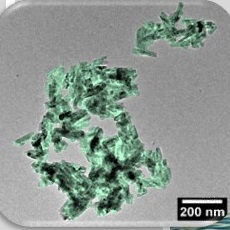 Uma equipe de pesquisadores de universidades brasileiras descobriu, em nanoestruturas de formato cilíndrico chamadas de nanobastões, um efeito anti-inflamatório equivalente ao conseguido por fármacos de uso corriqueiro. Os pesquisadores também demonstraram a eficiência desses nanobastões como catalisadores (aceleradores) na degradação de um poluente. Essas aplicações se tornam ainda mais relevantes considerando que a equipe científica conseguiu produzir grandes quantidades do material mediante um processo simples e rápido. O trabalho realizado mostra o potencial desses nanobastões para o desenvolvimento de novos medicamentos e para o tratamento de efluentes.
Uma equipe de pesquisadores de universidades brasileiras descobriu, em nanoestruturas de formato cilíndrico chamadas de nanobastões, um efeito anti-inflamatório equivalente ao conseguido por fármacos de uso corriqueiro. Os pesquisadores também demonstraram a eficiência desses nanobastões como catalisadores (aceleradores) na degradação de um poluente. Essas aplicações se tornam ainda mais relevantes considerando que a equipe científica conseguiu produzir grandes quantidades do material mediante um processo simples e rápido. O trabalho realizado mostra o potencial desses nanobastões para o desenvolvimento de novos medicamentos e para o tratamento de efluentes.
O trabalho originou-se cerca de três anos atrás, quando o professor Felipe de Almeida La Porta, que tinha se incorporado recentemente ao corpo docente da Universidade Tecnológica Federal do Paraná (UTFPR), campus Londrina, estava implementando um grupo de pesquisa em Nanotecnologia e Química Computacional (NANOQC) nessa universidade. “Nosso laboratório começou a investigar algumas classes de materiais emergentes, com a perspectiva de conciliar teoria e prática, impulsionado assim novas descobertas e aplicações.”, conta La Porta. Um dos materiais estudados pelo grupo, foi o germanato de zinco (Zn2GeO4), um versátil semicondutor com aplicações em sensores, catalisadores, baterias entre outros dispositivos.
Junto ao bolsista de iniciação científica Victor Yuudi Suzuki, o professor iniciou um projeto em que sintetizou, no laboratório da UTFPR, nanobastões de Zn2GeO4 puro e com porcentagens muito pequenas de íons de manganês. Para produzir essa série de nanobastões, eles utilizaram a chamada “síntese hidrotérmica assistida por micro-ondas”. O método consiste, em grandes linhas, em misturar soluções aquosas contendo determinados compostos, aquecer a solução final com ajuda de um forno de micro-ondas e deixar que os compostos reajam por um determinado tempo a uma pressão e temperatura controlada. No caso do Zn2GeO4 dopado com íons manganês que foram preparados neste estudo, essas reações foram realizadas a 140 °C durante 10 minutos. O material que resulta dessas reações é recolhido na temperatura ambiente, posteriormente lavado e secado, gerando os nanobastões.
O professor La Porta e seu grupo de pesquisa conseguiram otimizar uma das etapas do processo, a cristalização dos materiais, de modo a diminuir o tempo de síntese de horas para alguns minutos, mantendo assim a qualidade do material e a possibilidade de controlar seu formato.
Depois de preparar as amostras, a dupla viajou de Londrina até São Carlos (SP) para caracterizar os materiais no Centro de Desenvolvimento de Materiais Funcionais (CDMF) da Universidade Federal de São Carlos (UFSCar) e no Instituto de Física da Universidade de São Paulo (USP). Ali, junto a pesquisadores locais, puderam analisar o formato, estrutura e a luminescência dos quatro tipos de composições de nanobastões produzidos: sem manganês e com 1, 2 e 4% desse elemento incorporado à estrutura do Zn2GeO4.
Finalmente, sabendo que compostos contendo zinco, germânio ou manganês apresentam atividade biológica considerável (efeitos benéficos ou negativos sobre os seres vivos), a equipe resolveu contatar colaboradores para investigar esse tipo de propriedades nos nanobastões. Dessa maneira, uma série de experimentos foi realizada nos Departamentos de Química e Farmácia da Universidade Federal de Juiz de Fora e na Universidade Federal dos Vales do Jequitinhonha e Mucuri, ambas no estado de Minas Gerais.
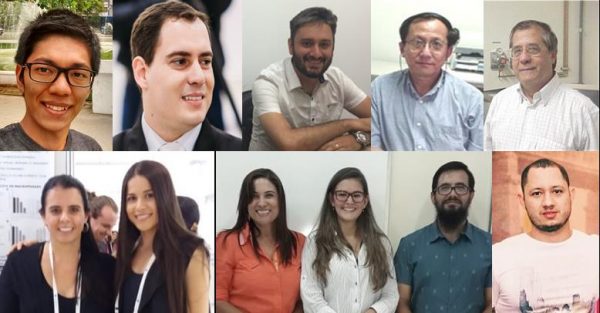
Para estudar a ação anti-inflamatória, a equipe realizou testes in vitro (em contato com células em recipientes laboratoriais) e também in vivo (usando ratos com edemas nas patas, dentro das normas do código brasileiro de uso de animais em laboratório). Ambos os tipos de experimentos revelaram que os nanobastões com cerca de 4% de manganês foram os mais eficazes no controle da inflamação. Nos testes in vitro, essas nanoestruturas foram capazes de modular moléculas que regulam a inflamação sem causar morte de células (sem citotoxicidade). Nos experimentos in vivo, os nanobastões reduziram edemas induzidos nas patas dos ratos com resultados similares aos da aplicação de dexametasona, um conhecido fármaco do grupo dos corticoides.
“No primeiro momento, pensamos que a combinação desses elementos para formação de um óxido ternário poderia de certo modo potencializar esses efeitos. Mais não tínhamos ideia que os resultados seriam tão significativos. Tendo em vista que os medicamentos atualmente disponíveis na terapêutica estão se mostrando cada dia menos eficazes, estes resultados podem encorajar o uso destes nanobastões, por exemplo, na produção de uma nova formulação farmacêutica, especialmente para casos de inflamação”, diz Felipe La Porta, que é o autor correspondente da pesquisa que foi recentemente publicado pela equipe de pesquisadores no Journal of Materials Chemistry C (fator de impacto 6,641).
Além de comprovar o potencial do material para essa aplicação do campo da saúde, os autores do artigo verificaram experimentalmente a capacidade dos nanobastões de degradarem um corante químico bastante encontrado em efluentes industriais, chamado azul de metileno. Para esta aplicação, as nanoestruturas com 2% de manganês foram as mais eficientes, decompondo completamente o corante em 10 minutos. “Devido à simplicidade de fabricação deste sistema aliado a suas excelentes propriedades, este material também é promissor para limpeza de diversos poluentes ambientais, e pode ser facilmente recuperado no final deste processo”, comenta o professor da UTFPR.
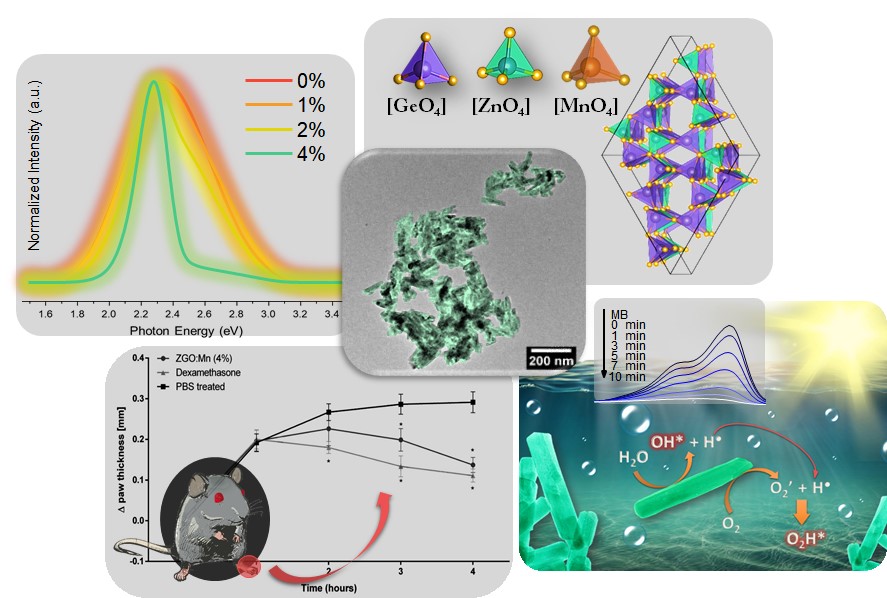
As propriedades superiores que a equipe científica brasileira encontrou nos nanobastões com manganês podem ser relacionadas aos defeitos estruturais observados nessas amostras. De fato, a rede tridimensional de átomos que forma o germanato de zinco é cristalina, ou seja, organizada em padrões regulares. Com a introdução de manganês, irregularidades são geradas, e delas surgem novas propriedades.
O artigo científico que reporta este trabalho foi selecionado para compor a coleção Materials and Nano Research in Brazil, preparada pela Royal Society of Chemistry em comemoração do XVIII B-MRS Meeting, e, portanto, pode ser acessado sem custo até 15 de outubro deste ano, aqui.
O trabalho foi realizado com financiamento de agências brasileiras de apoio à pesquisa: as federais CNPq e Capes, e as estaduais Fundação Araucária, Fapesp e Fapemig.
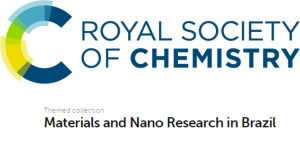 A Royal Society of Chemistry (RSC) preparou uma coleção online de artigos de autores brasileiros em comemoração ao XVIII B-MRS Meeting (Balneário Camboriú, 22 a 26 de setembro de 2019). A RSC é apoiadora desta edição do evento anual da SBPMat.
A Royal Society of Chemistry (RSC) preparou uma coleção online de artigos de autores brasileiros em comemoração ao XVIII B-MRS Meeting (Balneário Camboriú, 22 a 26 de setembro de 2019). A RSC é apoiadora desta edição do evento anual da SBPMat.
Intitulada Materials and Nano Research in Brazil, a coleção reúne 55 artigos publicados em periódicos da editora RSC entre 2017 e 2019. Todos os artigos selecionados podem ser acessados sem custo (open access) até 15 de outubro de 2019.
A coleção está disponível em www.rsc.li/brazil-mrs-2019